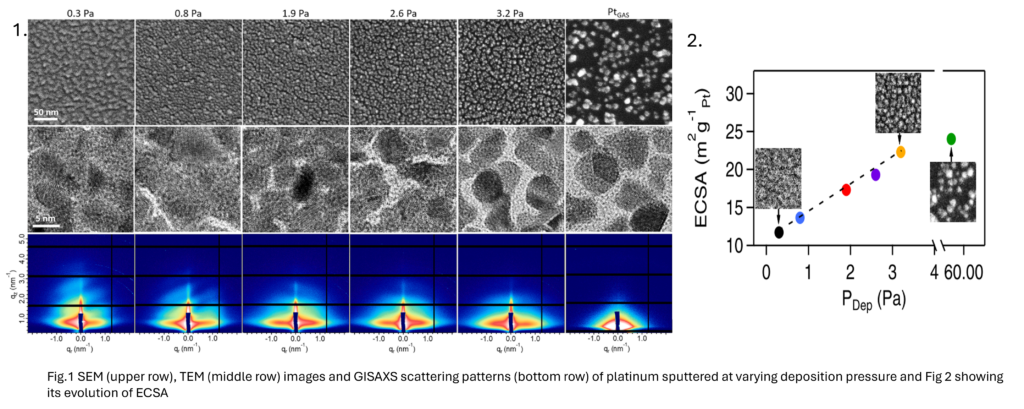Modifying the structure of platinum-based fuel cells catalysts
|Platinum is a promising catalyst material for fuel cells development. However, it is rare and expensive, and its catalytic activity degrades over time. Sputtering deposition via a magnetron (a high-vacuum tube containing a cathode and an anode) is a simple and fast method for the production of catalyst layers, which allows to modify the deposit morphology by variation of certain parameters.

CERIC PhD fellow Athira Lekshmi and colleagues applied this feature by varying the sputtering deposition pressure, with the aim of getting platinum deposited as one monolayer of nanoparticles assembly. They then investigated the morphology and structure of deposited layers with different characterization techniques available at the CERIC Czech partner facility at Charles University (Prague), including scanning electron microscopy, transmission electron microscopy, grazing incidence small angle X-ray scattering and X-ray diffraction. Scientist then discovered that, due to the increase of pressure, the platinum layer morphology evolves from a thin-film-like layer of tightly packed platinum nanoparticles to a deposit composed of dispersed particles of 5-7 nm in size.
These results proved the advantage of magnetron sputter deposition for the fast and scalable preparation of fuel cells electrodes, contributing to a conversion to clean energy, which is needed to cut greenhouse gas emissions.
ORIGINAL ARTICLE:



